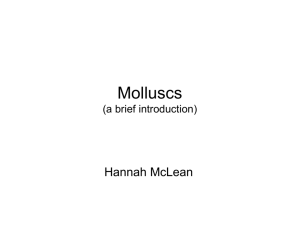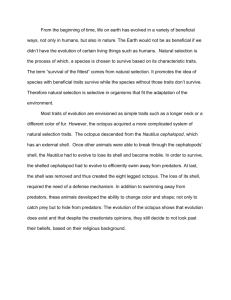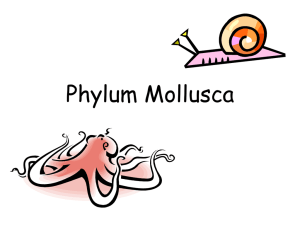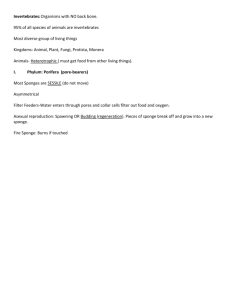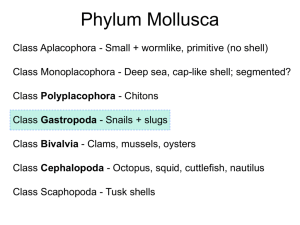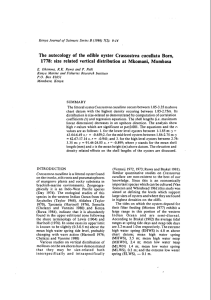Mollusks - mrgittermann
advertisement
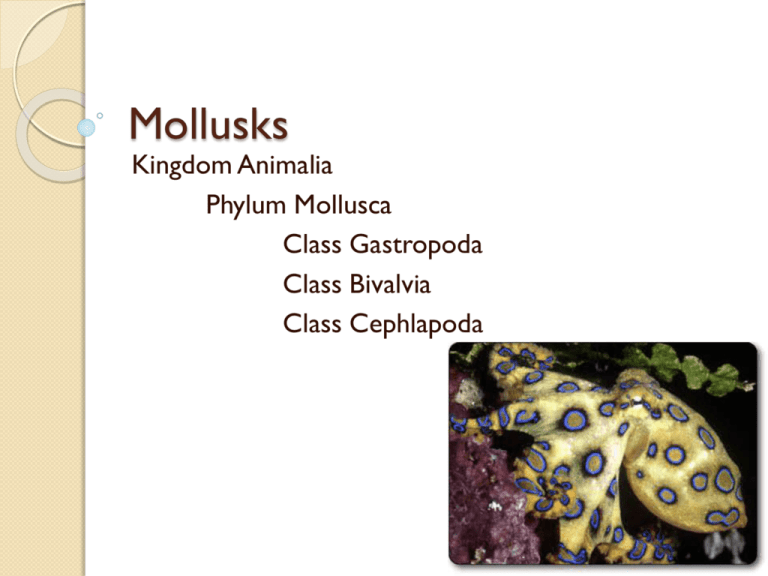
Mollusks Kingdom Animalia Phylum Mollusca Class Gastropoda Class Bivalvia Class Cephlapoda Mollusks 50,000 species 10 classes Includes: ◦ ◦ ◦ ◦ ◦ ◦ ◦ Squid Octopus Clams Conches Snails Sea slugs Oysters Basic Anatomical Structures: a) Mantle – muscular bag that surrounds the gills and most organs and is used to circulate water 1. some use it to circulate water or jet propulsion 2. secretes calcium carbonate shell Basic Anatomical Structures: b) Foot – muscular structure used for movement 1. In snails & slugs it’s used to crawl 2. In bivalves it’s used to dig 3. In squids, it takes the form of tentacles Basic Anatomical Structures: c) Radula – a tongue like structure with scraping teeth Class Gastropoda Includes snails, slugs, whelks, & abalone Defining Characteristics: - Radula - Some have a shell - Sensitive Tentacles - Shell-less members can produce toxins or store eaten nematocysts Snails Sea Slugs Whelks Abalone Class Bivalvia: Includes clams, oysters, mussels, scallops Defining characteristics: - Two hinged shells - No head, but sensory organs on shells edge - Two siphons extend out of the shell - Mantle pumps water Clam Oyster Mussel Scallop Clam Oyster Mussel Scallop Pearl Making Abilities When ever sand or an irritant gets inside a shell of an oyster, it coats it in a substance called nacre, creating a pearl Pearl farmers put seeds inside oysters to create pearls Class Cephalopoda Includes squid, octopus, nautilus, cuttlefish Defining Characteristics: - Little to no shell, ranging from gastropod like shell (nautilus) to internal leaf like shell (cuttlefish) to thin internal bar called a pen (squid) to nothing (octopus) Class Cephalopoda Defining Characteristics: - Specialized foot called a siphon for jet propulsion - Ink sac - Chromatophores – cells that can change color - Complex nervous systems consisting of large eyes and critical thinking abilities Octopus 8 arms Beak like jaws No shell Bottom dwellers Squid Better adapted for swimming due to elongated body and two fins formed by the mantle Ten arms, two of which are longer are called tentacles A reduced shell called the pen can be found embedded in the upper surface Cuttlefish Resemble squids Eight arms and two tentacles Flattened with a fin along the sides Internal Shell Nautilus Smooth exterior shell Contains several gas filled chambers that aid in buoyancy Has 60-90 arms to catch prey

